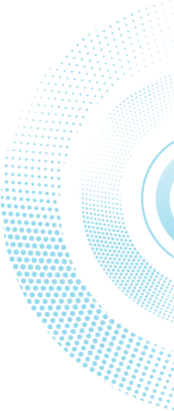|
|
|
|
|
|
|
- Zilberman, N., Lavidor, M., Yadid, G., & Rassovsky, Y. (2019). Qualitative review and quantitative effect size meta-analyses in brain regions identified by cue-reactivity addiction studies. Neuropsychology, 33(3), 319.
|
- Shilo, G., & Lavidor, M. (2019). Non-linear effects of cathodal transcranial direct current stimulation (tDCS) of the primary motor cortex on implicit motor learning. Experimental brain research, 1-7.
|
- Yaniv, A., Benaroya-Milshtein, N., Steinberg, T., Ruhrman, D., Apter, A., & Lavidor, M. (2018). Executive control development in Tourette syndrome and its role in tic reduction. Psychiatry research, 262, 527-535.
|
- Jacoby, N., & Lavidor, M. (2018). Null tDCS Effects in a Sustained Attention Task: The Modulating Role of Learning. Frontiers in psychology, 9, 476.
|
- Pobric, G., Hulleman, J., Lavidor, M., Silipo, G., Rohrig, S., Dias, E., & Javitt, D. C. (2018). Seeing the World as it is: Mimicking Veridical Motion Perception in Schizophrenia Using Non-invasive Brain Stimulation in Healthy Participants. Brain topography, 31(5), 827-837.
|
- Levy, N. K., Lavidor, M., & Vakil, E. (2018). Prosaccade and antisaccade paradigms in persons with Alzheimer’s disease: a meta-analytic review. Neuropsychology review, 28(1), 16-31.
|
- Jacoby, N., & Lavidor, M. (2018). Null tDCS Effects in a Sustained Attention Task: The Modulating Role of Learning. Frontiers in psychology, 9, 476.
- Pobric, G., Hulleman, J., Lavidor, M., Silipo, G., Rohrig, S., Dias, E., & Javitt, D. C. (2018). Seeing the World as it is: Mimicking Veridical Motion Perception in Schizophrenia Using Non-invasive Brain Stimulation in Healthy Participants. Brain topography, 1-11
- Yaniv, A., & Lavidor, M. (2018). Without Blinking an Eye: Proactive Motor Control Enhancement. Journal of Cognitive Enhancement, 2(1), 97-105.
- Jospe, K., Flöel, A., & Lavidor, M. (2018). The Interaction between Embodiment and Empathy in Facial Expression Recognition. Social Cognitive and Affective Neuroscience 13(2), 203-215.
- Yaniv, A., Benaroya-Milshtein, N., Steinberg, T., Ruhrrman, D., Apter, A., & Lavidor, M. (2017). Specific executive control impairments in Tourette syndrome: The role of response inhibition. Research in developmental disabilities, 61, 1-10.
|
- Jospe, K., Flöel, A., & Lavidor, M. (2017). The Role of Embodiment and Individual Empathy Levels in Gesture Comprehension. Experimental Psychology.
- Sened, H., Lavidor, M., Lazarus, G., Bar-Kalifa, E., Rafaeli, E., & Ickes, W. (2017). Empathic accuracy and relationship satisfaction: A meta-analytic review. Journal of Family Psychology, 31(6), 742.
- Harwood, A., Lavidor, M., & Rassovsky, Y. (2017). Reducing aggression with martial arts: A meta-analysis of child and youth studies. Aggression and violent behavior, 34, 96-101.
- Yaniv, A., Benaroya-Milshtein, N., Steinberg, T., Ruhrman, D., Apter, A., & Lavidor, M. (2017). Executive control development in Tourette syndrome and its role in tic reduction. Psychiatry Research..
- Sela, T., Panzer, M. S., & Lavidor, M. (2017). Divergent and convergent hemispheric processes in idiom comprehension: The role of idioms predictability. Journal of Neurolinguistics, 44, 134-146.
- Levy, N. K., Lavidor, M., & Vakil, E. (2017). Prosaccade and Antisaccade Paradigms in Persons with Alzheimer’s Disease: A Meta-Analytic Review. Neuropsychology review, 1-16.
- Pobric, G., Hulleman, J., Lavidor, M., & Javitt, D. (2016). Seeing the world as it is: veridical motion perception in schizophrenia and effects of non-invasive transcranial electric stimulation. Journal of Vision, 16(12), 888-888.
- Lavidor, M. (2016). tES stimulation as a tool to investigate cognitive processes in healthy individuals. European Psychologist, 21, 15-29
- Tayeb, Y., & Lavidor M. (2016). Enhancing Switching Abilities: Improving Practice Effect by Stimulating the Dorsolateral Pre Frontal Cortex, Neuroscience, 313, 92-98.
- Antonenko, D., Faxel, M., Grittner, U., Lavidor, M., & Flöel, A. (2016). Effects of transcranial alternating current stimulation on cognitive functions in healthy young and older adults. Neural Plasticity, 2016, Article ID 4274127, 13 pages
- Mitchell, R. L., Vidaki, K., & Lavidor, M. (2016). The role of left and right dorsolateral prefrontal cortex in semantic processing: A transcranial direct current stimulation study. Neuropsychologia, 91, 480-489.
- Amiaz, R., Vainiger, D., Gershon, A. A., Weiser, M., Lavidor, M., & Javitt, D. C. (2016). Applying Transcranial Magnetic Stimulation (TMS) Over the Dorsal Visual Pathway Induces Schizophrenia-like Disruption of Perceptual Closure. Brain topography,29, 552-60.
- Brezis, N., Bronfman, Z. Z., Jacoby, N., Lavidor, M., & Usher, M. (2016). Transcranial direct current stimulation over the parietal cortex improves approximate numerical averaging. Journal of Cognitive Neuroscience, 28(11), 1700–1713
- Sela, T., Lavidor, M., & Mitchell, R. L. (2015). A possible contributory mechanism for impaired idiom perception in schizophrenia. Psychiatry research, 229(1), 1-11.
- Cohen-Maximov, T., Avirame, K., Flöel, A., & Lavidor, M. (2015). Modulation of gestural-verbal semantic integration by tDCS. Brain stimulation, 8(3), 493-498.
- Axelrod, V., Rees, G., Lavidor, M., & Bar, M. (2015). Increasing propensity to mind-wander with transcranial direct current stimulation. Proceedings of the National Academy of Sciences, 112 (11), 3314-3319.
- Pecchinenda, A., Ferlazzo, F., & Lavidor, M. (2015). Modulation of selective attention by polarity-specific tDCS effects. Neuropsychologia, 68, 1-7.
- Sela, T., & Lavidor, M. (2015). Enhancement of Sensory and Cognitive Functions in Healthy Subjects. In Textbook of Neuromodulation (pp. 257-273). Springer New York.
- Heth, I., & Lavidor, M. (2015). Improved reading measures in adults with dyslexia following transcranial direct current stimulation treatment. Neuropsychologia, 70, 107-113.
- Mualem, O., & Lavidor, M. (2015). Music education intervention improves vocal emotion recognition. International Journal of Music Education, 33(4), 413-425.
- Pashut, T., Magidov, D., Ben-Porat, H., Wolfus, S., Friedman, A., Perel, E., Lavidor M., Bar-Gad I & Korngreen, A. (2014). Patch-clamp recordings of rat neurons from acute brain slices of the somatosensory cortex during magnetic stimulation. Frontiers in Cellular Neuroscience, 8, 145.
- Makovski, T., & Lavidor, M. (2014). Stimulating occipital cortex enhances visual working memory consolidation. Behavioural brain research, 275, 84-87.
- Meiron, O., & Lavidor, M. (2014). Prefrontal oscillatory stimulation modulates access to cognitive control references in retrospective metacognitive commentary. Clinical Neurophysiology, 125(1), 77-82.
- Vainiger, D., Labruna, L., Ivry, R. B., & Lavidor, M. (2014). Beyond words: evidence for automatic language–gesture integration of symbolic gestures but not dynamic landscapes. Psychological research, 78(1), 55-69.
- Harpaz, Y., Lavidor, M., & Goldstein, A. (2013). Right semantic modulation of early MEG components during ambiguity resolution. NeuroImage. 82, 107-114
- Meiron, O., & Lavidor, M. (2013). Unilateral prefrontal direct current stimulation effects are modulated by working memory load and gender. Brain stimulation, 6(3), 440-447.
- Metuki, N., Sinkevich, S., & Lavidor, M. (2013). Lateralization of semantic processing is shaped by exposure to specific mother tongues: The case of insight problem solving by bilingual and monolingual native Hebrew speakers. Bilingualism: Language and Cognition, 16(04), 900-913.
- Weltman, K., & Lavidor, M. (2013). Modulating lexical and semantic processing by transcranial direct current stimulation. Experimental Brain Research, 226(1), 121-135.
- Peretz, Y., & Lavidor, M. (2013). Enhancing lexical ambiguity resolution by brain polarization of the right posterior superior temporal sulcus. Cortex. 49(4), 1056-1062.
- Spitoni, G. F., Pireddu, G., Cimmino, R. L., Galati, G., Priori, A., Lavidor, M., ...& Pizzamiglio, L. (2013). Right but not left angular gyrus modulates the metric component of the mental body representation: a tDCS study. Experimental Brain Research, 228(1), 63-72.
- Globerson E.Amir, N., Golan O., Kishon-Rabin L., & Lavidor M. (2013). Psychoacoustic abilities as predictors of vocal emotion Recognition, Attention, Perception, & Psychophysics. 75(8), 1799-1810
|
- Metuki, N., & Lavidor, M. (2013). Applying advancements in neurolinguistic research to enhance semantic processing via cognitive training. Journal of Neurolinguistics, 26(6), 662-690
|
- Hecht, D., Walsh, V., & Lavidor, M. (2013). Bi-frontal direct current stimulation affects delay discounting choices. Cognitive Neuroscience, 4(1), 7-11.
|
- Mitchell, R. L., Sela, T., & Lavidor, M. (2013). What is the importance and value of research on idiom comprehension in schizophrenia?. Australian and New Zealand Journal of Psychiatry, 47 (12), 1207-1208.
|
- Harpaz Y & Lavidor M. (2012). Context modulates hemispheric asymmetries in the resolution of lexical ambiguity. Journal of Cognitive Psychology, 24(4), 428-440.
|
- Ditye, T., Jacobson, L., Walsh, V., & Lavidor, M. (2012). Modulating behavioral inhibition by tDCS combined with cognitive training. Experimental Brain Research, 219(3), 363-368.
|
- Weiss M., & Lavidor M. (2012). When less is more: Evidence for a facilitative cathodal tDCS effect in attentional abilities. Journal of Cognitive Neuroscience. 24(9), 1826-1833
|
- Metuki N., Sela T., Lavidor M. (2012). Enhancing cognitive control components of insight problem solving by anodal tDCS of the left dorsolateral prefrontal cortex. Brain Stimulation, 5, 110-115
|
- Jacobson L., Goren N., Lavidor M., & Levy DA. (2012). Oppositional transcranial direct current stimulation (tDCS) of parietal substrates of attention during encoding modulates episodic memory. Brain Research, 1439, 66-72.
|
- Sela, T., Ivry, R. B., & Lavidor, M. (2012). Prefrontal control during a semantic decision task that involves idiom comprehension: A transcranial direct current stimulation study. Neuropsychologia, 50(9), 2271-2280.
|
- Jacobson, L., Koslowsky M., & Lavidor M. (2012). tDCS polarity effects in motor and cognitive domains: A Meta- Analytical review. Experimental Brain Research, 216, 1-10.
|
- Jacobson, L., Ezra A., Berger, U, & Lavidor M. (2012). Modulating oscillatory brain activity correlates of behavioral inhibition using transcranial direct current stimulation. Clinical Neurophysiology 123, 979-984.
|
- Alexander T., Avirame K. & Lavidor M. (2012). Improving emotional prosody detection in the attending ear by cathodal tDCS suppression of the competing channel. Neurocience Letters, 508, 52-55.
|
- Sela T., Kilim A., & Lavidor M. (2012). Transcranial alternating current stimulation (tACS) increases risk taking behavior in the Balloon Analogue Risk Task, Frontiers in Decision Neuroscience. 6, 22.
|
- Chouake T, Levy T., Javitt DC., & Lavidor M. (2012). Magnocellular training improves visual word recognition, Frontiers in Human Neuroscience, 6, 14.
|
- Jacobson, L., Javitt DC., & Lavidor M. (2011). Activation of inhibition: Diminishing impulsive behavior by direct current stimulation over the Inferior Frontal Gyrus. Journal of Cognitive Neuroscience, 23(11), 3380-3387
|
- Berger U., Korngreen A., Bar-Gad I., Friedman, A., Wolfus, S., Yeshurun Y., & Lavidor M. (2011). Magnetic stimulation intensity modulates motor inhibition. Neuroscience Letters, 504, 93-97.
|
- Lavidor M. (2011). Whole-word shape effect in dyslexia. Journal of Research in Reading, 34, 443-454
- Nemrodov D., Harpaz, Y., Javitt, DC., & Lavidor M. (2011). ERP evidence of hemispheric independence in visual word recognition. Brain and Language, 118(3), 72-80
|
- Pashut T, Wolfus S, Friedman A, Lavidor M, Bar-Gad I,Yeshurun Y., & Korngreen A. (2011) Mechanisms of Magnetic Stimulation of Central Nervous System Neurons. PLoS Computational Biology 7(3): e1002022
|
- Tischler, H., Wolfus S., Friedman A., Perel E., Pashut T., Lavidor M., Korngreen, A., Yeshurun Y., Bar-Gad, I. (2011). Mini-coil for magnetic stimulation in the behaving primate, Journal of Neuroscience Methods, 194, 242-251
|
- Madrid GJ, Lavie N & Lavidor M. (2010). Asymmetrical perceptual load in lateralized word processing . European Journal of Cognitive Psychology, 22(7),1066-1077
|
- Levy, T., Walsh, V., & Lavidor, M. (2010). Dorsal stream modulation of visual word recognition in skilled readers. Vision Research, 50, 883-888.
|
- Hecht D., Walsh, V. & Lavidor M. (2010). Transcranial Direct Current Stimulation (tDCS) Facilitates Decision Making in a Probability Guessing Task. J Neuroscience, 30, 4241-4245.
|
- Lavidor M., Alexander T., McGraw PV. (2009). Word recognition processes modulate the naso-temporal asymmetry of the human visual field. Perception , 38, 1536-1541.
|
- Harpaz, Y. Levkovitz, Y., Lavidor M. (2009). Lexical ambiguity resolution in Wernicke's area and its right homologue. Cortex, 45(9):1097-103.
|
- Fuggetta G, Rizzo S, Pobric G, Lavidor M, Walsh V. (2009). Functional Representation of Living and Nonliving Domains across the Cerebral Hemispheres: A Combined Event-related Potential/TMS Study. J Cognitive Neuroscience, 21, 403-414.
|
- Shamay-Tsoory S., Lavidor M., Aharon-Peretz J. (2008). Social learning modulates the lateralization of emotional valence. Brain and Cognition. 67(3):280-91.
|
- Pobric, G., Mashal, N., Fasut, M., Lavidor M. (2008). The role of the right cerebral hemisphere in processing novel metaphoric expressions: A TMS study. Journal of Cognitive Neuroscience. 20(1):170-81.
|
- Cai, Q., Lavidor M., Brysbaert M., Paulignan Y., & Nazir, T. (2008). Cerebral lateralization during verb generation and lateralization of the posterior visual word processing system. Journal of Cognitive Neuroscience. 20(4):672-81.
|
- Skarratt, PA., McDonald, SA. & Lavidor, M. (2008). Evidence for word length coding during visual word recognition. The European Journal of Cognitive Psychology, 20, 1-12.
|
- Ellis, A. W., Ansorge, L., & Lavidor, M. (2007). Words, hemispheres, and processing mechanisms: A response to Marsolek and Deason. Brain and Language, 103(3):308-12.
|
- Chiang, TC, Vaithianathan, T., Leung, T., Lavidor, M., Walsh, V., Delpy, D. T. (2007). Elevated haemoglobin levels in the motor cortex following 1 Hz transcranial magnetic stimulation - a preliminary study. Experimental Brain Research, 181(4): 555-60.
|
- Hsiao, J. H. W., Shillcock, R., & Lavidor, M. (2007). An examination of semantic radical combinability effects with lateralized cues in Chinese character recognition. Perception and Psychophysics, 69(3):338-44.
|
- Pobric, G., Schweinberger, S. R. & Lavidor, M. (2007). Magnetic stimulation of the right visual cortex impairs form-specific priming. J Cognitive Neuroscience, 19(6): 1013-20.
|
- Siéroff, E., & Lavidor, M. (2007). Examination of the split fovea theory in a case of pure left hemialexia. Cognitive Neuropsychology, 24, 243-259.
|
- Cooper, TJ, Harvey, M. Lavidor M., Schweinberger SR. (2007). Hemispheric Asymmetries in Image-specific and Abstractive Priming of Famous Faces: Evidence from Reaction Times and Event-related Brain Potentials. Neuropsychologia, 45(13):2910-21.
|
- Ellis, A. W., Ansorge, L., & Lavidor, M. (2007). Words, hemispheres, and dissociable subsystems: effects of exposure duration, case alternation, priming and continuity of form on word recognition in the left and right visual fields. Brain & Language, 103(3):292-303
|
- Skarratt, P. A., & Lavidor, M. (2006). Magnetic stimulation of the left visual cortex impairs expert word recognition. Journal of Cognitive Neuroscience, 18(10):1749-58
|
- Hsiao, JH, Shillcock, RC, & Lavidor M. (2006). A TMS Examination of Semantic Radical Combinability Effects in Chinese Character Recognition. CBR, 1078(1):159-167
|
- Lavidor, M., Johnston, R. S. & Snowling, M. J. (2006). When phonology fails: Orthographic neighbourhood effects in Dyslexia. Brain & Language. 96(3):318-329.
|
- Lavidor, M., & Bailey, P. J. (2005). Dissociations between serial position and number of letters effects in lateralized visual word recognition. J Research in Reading, 28, 258-273.
|
- Whitney, C. & Lavidor, M. (2005). Facilitative Orthographic Neighborhood Effects: The SERIOL Model Account. Cognitive Psychology, 51, 179-213.
|
- Lavidor, M., & Whitney, C. (2005). Word length effects in Hebrew. Cognitive Brain Reasearch, 24, 127-32
|
- Chiang, T. C., & Lavidor, M. (2005). Magnetic stimulation and the Crossed-Uncrossed difference (CUD) paradigm: Selective effects in the ipsi- and contra-lateral hemispheres. Experimental Brain Research, 160, 404-408.
|
- Ellis, A. W., Brooks, J., & Lavidor, M. (2005). Evaluating a split fovea model of visual word recognition: Effects of case alternation in the two visual fields and in the left and right halves of words presented at the fovea. Neuropsychologia, 43, 1128-37.
|
- Chiang, TC., Walsh, V., & Lavidor, M. (2004). The cortical representation of foveal stimuli: TMS-induced suppression. Cognitive Brain Research, 21, 309-316..
|
- Lavidor, M., Brinksman, V., & Gobel, S. (2004). Hemispheric asymmetry and the mental number line. Neuropsychologia, 42, 1927-1933.
|
- Lavidor M., & Walsh, V. (2004). The nature of foveal representation. Nature Reviews Neuroscience, 5, 729-735.
|
- Whitney, C., & Lavidor, M. (2004). Why Word Length Only Matters in the Left Visual Field. Neuropsychologia, 42, 1680-1688.
|
- Lavidor, M., & Walsh, V. (2004). Transcranial Magnetic Stimulation studies of foveal representation. Brain and Language, 88, 331-338.
|
- Lavidor, M., Hayes, A., Shillcock, R. & Ellis, A. W. (2004). Evaluating a split processing model of visual word recognition: Effects of orthographic neighborhood size. Brain and Language, 88, 312-320..
|
- Faust M., & Lavidor, M. (2003). Semantically convergent and semantically divergent priming in the cerebral hemispheres: lexical decision and semantic judgment, Cognitive Brain Research, 17, 585-597.
|
- Lavidor, M. & Ellis, A. W. (2003). Orthographic and phonological priming in the two cerebral hemispheres. Laterality, 8, 201-223..
|
- Lavidor, M., & Walsh, V. (2003). A magnetic stimulation examination of orthographic neighbourhood effects in visual word recognition. J Cognitive Neuroscience, 15, 354-363.
|
- Lavidor, M., Hayes, A., & Bailey, P. (2003). Handedness, measures of hemispheric asymmetry and lateralized lexical decision. Laterality, 8, 347 - 360.
|
- Lavidor, M. (2003). Implicatons of the split fovea theory in divided visual field research: a reply to Lindell and Nicholls. Cortex, 39, 118-120..
|
- Lavidor, M., & Ellis, A. W. (2003). Interhemispheric integration in a split-processing model of visual word recognition. Cortex, 39, 69-83..
|
- Lavidor M., Ellison A., & Walsh, V. (2003). Examination of a split-processing model of visual word recognition: a magnetic stimulation study. Visual Cognition, 10, 341 - 362.
|
- Lavidor, M, Ellis, AW., & Pansky, A.(2002). Case alternation and length effects in lateralized word recognition: studies of English and Hebrew. Brain & Cognition, 50, 257-71.
|
- Lavidor M. (2002). An examination of the lateralized abstractive/form specific model using MiXeD-CaSe primes. Brain and Cognition, 48, 413-417.
|
- Lavidor, M. & Ellis, A. W. (2002). Orthographic Neighborhood Effects in the Right but Not in the Left Cerebral Hemisphere. Brain and Language, 80, 63-76.
|
- Lavidor, M. & Ellis, A. W. (2002). Word Length and Orthographic Neighborhood Size Effects in the Left and Right Cerebral Hemispheres. Brain and Language, 80, 45-62.
- Lavidor, M., Ellis, A. W., Shillcock, R., & Bland, T. (2001). Evaluating a split processing model of visual word recognition: Effects of word length. Cognitive Brain Research, 12(2), 265-272.
- Lavidor, M., Babkoff, H., & Faust, M. (2001). Analysis of standard and non-standard visual word format in the two hemispheres. Neuropsychologia, 39(4), 430-439.
- Lavidor, M., & Ellis, A. W. (2001). Mixed-case effects in lateralized word recognition. Brain and cognition, 46(1-2), 192-195.
|




